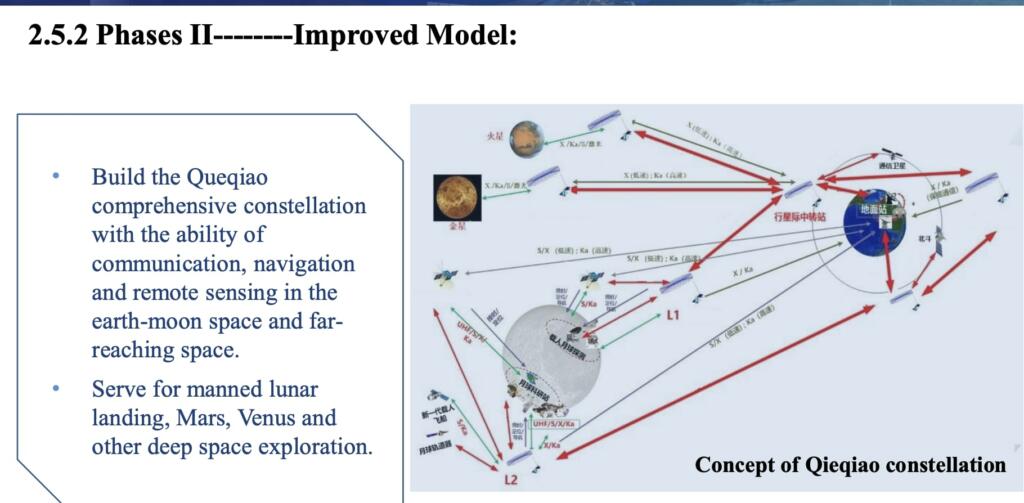China is planning dozens of missions to the moon to first build a research base and then convert it into a multifunctional international moonbase. They plan to employ 3D printing and production of bricks from the lunar regolith.
More than 100 researchers from domestic universities, research institutes and space contractors took part in the Extraterrestrial Construction Conference held at Huazhong University of Science and Technology in Wuhan in April, 2023.
China plans to have the first basic lunar base module in 2028 and then to build over about 5 missions a more complete research base by 2040 and then this will be expanded into a larger multi-functional base by 2050. They will experiment with 3D printing and making bricks from lunar soil. 3D printing, robotics and other construction with lunar materials will become a major enabling capability for the future moonbase.
China has also talked about using nuclear reactors and solar power to power the base.
Ding Lieyun, a specialist in intelligent construction and chief scientist of the National Centre of Technology Innovation for Digital Construction at the university. Ding told the conference about the latest developments at his laboratory, including the creation of samples of simulated lunar soil. Ding’s team had previously proposed moon base designs such as the egg-shaped Lunar Pot Vessel, which is made of bricks based on moon soil created using 3D printers and lasers.
His team then used a robot named Chinese Super Mason to put the bricks together using traditional Chinese construction techniques – a process Ding compared to building Lego and which he said was less risky and more efficient than printing the whole structure.
Ding said there are multiple challenges to be overcome when building a moon base, including the lack of water, low gravity, frequent moon quakes and strong cosmic radiation.
In a separate interview with Changjiang Daily, Ding said the first brick made of lunar soil will be built during the Chang’e 8 mission in about five years’ time. “We will be using real moon soil to make the first brick right there on the moon”, he added.
Yu and researchers from the Harbin Institute of Technology in northeastern China published detailed designs of two moon bases, named Clover and Red Star, in the Journal of Deep Space Exploration in February.












Science Fiction Moonbase – Space 1999
NASA also has plans for a moonbase. ICON is one of the contractors for the possible NASA moonbase. Nextbigfuture has covered NASA’s moon plans.
![]()
I want to end with the old science fictional visions of a moonbase from the classic TV show Space 1999. I loved the musical theme to the show.
2001 a Space Odyssey also had a great vision for a moonbase.

Brian Wang is a Futurist Thought Leader and a popular Science blogger with 1 million readers per month. His blog Nextbigfuture.com is ranked #1 Science News Blog. It covers many disruptive technology and trends including Space, Robotics, Artificial Intelligence, Medicine, Anti-aging Biotechnology, and Nanotechnology.
Known for identifying cutting edge technologies, he is currently a Co-Founder of a startup and fundraiser for high potential early-stage companies. He is the Head of Research for Allocations for deep technology investments and an Angel Investor at Space Angels.
A frequent speaker at corporations, he has been a TEDx speaker, a Singularity University speaker and guest at numerous interviews for radio and podcasts. He is open to public speaking and advising engagements.


The fact that Starship hasn’t yet achieved orbit isn’t relevant because the probability that it will do so within the next year is high. So we should think about things statistically and not Boolean.
NASA does have money if they don’t allocate it illogically / inefficiently.
I agree with your view that resources-based lunar economics is problematic for the reasons that you list. I would even add water for propellant (the leading resource) because the main buyer (SpaceX for Mars) isn’t buying the idea.
However, not all business is resource-oriented — by a long shot. National prestige/pride, personal significance, group commitments, and unique experiences including tourism are oriented to things other than resources and will draw funding from sources other than who mining companies sell to.
What can you usefully do with bricks on the moon?
Any structure that is intended to hold in air for humans to breath needs to be made of materials with a fair bit of *tensile* strength, compressive strength is useless for that.
For early habitats, use inflatables, lander fuel tanks etc. and pile regolith over them for radiation and micrometeorite shielding. Once there is extraction of metal & oxygen from the regolith use the metal to make more habitats with the tensile strength to hold in the air.
Totally, totally agree! There is far too many challenges and hype around 3D printed habitats. Inflatables are way faster, use the strongest of materials, can have very large volumes, take precious little time to set up, don’t have equipment breakdown during set-up, and require precious little energy to set up.
The Space Development Network has two solutions for using regolith on top of inflatables (with an abrasive layer covering).
1) Have a relatively flat roof by using interior tethers and walls.
2) Have a double outer wall with a suspended hole in the outermost layer into which just pour regolith using a mining conveyor belt.
DevelopSpace.info/inflatables
DevelopSpace.info/domehole
DevelopSpace.info/instabase
Robotic and autonomous asteroid and other NEO mining and exploitation first – moon civilization 2nd, mars civilization 3rd.
Not going to happen that way. We have dates for humans both on the Moon and Mars (2026 +/- & 2029 +/-) but not for asteroid mining. “Civilization” starts with the very first settlers which starts with a permanent habitat with will occur about 4-6 years after the first crewed landings on the Moon & Mars. They will use local resources there and no import asteroidal resources for a long time. LEO will just get resources launched for a long time before importing from asteroids.
Nope.
When I see the moon with 25,000 full-time people and is self-sufficient with necessities so that it can be completely disconnected from the Earth for 6 months, I will consider that as an early proto-civilization.
When I see mars with 10,000 full-time people and is self-sufficient with necessities so that it can be completely disconnected from the Earth for 3 years, I will consider that as an early proto-civilization.
I don’t even consider Antarctica a proto-civilization.
When I see 1 metric tonne of pre-processed proto-ore brought from 3 separate NEOs into cis-lunar space, I will consider that a NEO exploitation business.
1st NEO exploitation business;
2nd moon civilization;
3rd mars civilization.
I have spoken.
I smile when I watched the video about Chinese plans for a lunar base. Even if they keep track on their plans for first a robotic base and then a small government-centric base for exploration, they will find themselves so, so far behind the international base led by the Americans. The comparisons will be very embarrassing.
If the US is smart and aggressive we could easily blow well beyond China’s limited plans. With a Starship FLEET, and 100* metric ton inflatable modules we could establish not only a permanent foothold off Earth but very large and growing International Bases on both the Moon and Mars. 100 tons would be enough for an inflatable about one acre in foot print.
DevelopSpace.info/inflatables
DevelopSpace.info/specialty
The “Starship” doesn´t fly actually – and the US does not have the money to spent!
All big exploration, done by mankind, had one big aim, profit. But there is no profit on the moon. There is no ressource that is attractive. Even the notorious Helium 3 claim is a fake. We still fail to ignite “regular” nuclear fusion. The triple product for Helium 3 is still magnitudes harder to achieve.
The fact that Starship hasn’t yet achieved orbit isn’t relevant because the probability that it will do so within the next year is high. So we should think about things statistically and not Boolean.
NASA does have money if they don’t allocate it illogically / inefficiently.
I agree with your view that resources-based lunar economics is problematic for the reasons that you list. I would even add water for propellant (the leading resource) because the main buyer (SpaceX for Mars) isn’t buying the idea.
However, not all business is resource-oriented — by a long shot. National prestige/pride, personal significance, group commitments, and unique experiences including tourism are oriented to things other than resources and will draw funding from sources other than who mining companies sell to.